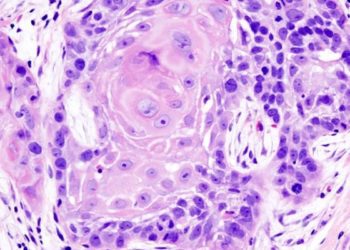Wellness Check: Sleep
Heavy smoking and alcohol use may be associated with insomnia and sleep dissatisfaction
1. In this cross-sectional database study, there was a greater prevalence of insomnia and dissatisfaction with sleep in individuals that engaged in daily smoking and binge drinking.
2. Furthermore, the association of smoking/alcohol and insomnia and sleep duration were similar between males and females.
Evidence Rating Level: 2 (Good)
Poor sleep quality has been previously associated with cigarette use and alcohol abuse. With the effects of the COVID-19 pandemic, there has been both increased disturbances in sleep as well as increased substance misuse noted. The association between substance misuse and sleep disorders have been well documented in adult populations; however, there is little information about elderly populations in the community. This study sought to explore the associations of substance overuse, namely tobacco and alcohol, and poor sleep patterns in an elderly Canadian population.
This study conducted a cross-sectional database review using the Canadian Longitudinal Study on Aging database. This specific cohort within the study sample included individuals between 45 and 85. Those who lived on First Nation reserve or were members of the Canadian Armed Forced were excluded. Collectively, 30,100 participants were randomly selected from the database population. Informed consent for participation was gathered, and individuals were provided self-reporting surveys on sleep satisfaction, duration, disorders, and measures of substance use frequency and amount. Co-variate analyses was completed, and regression analysis was used to determine prevalence rations.
Overall, this study identified that heavy smoking and drinking were associated with a higher prevalence of insomnia symptoms. Furthermore, short sleep duration and sleep dissatisfaction were associated with binge drinking and daily smoking. There were no gender differences in insomnia symptoms, however the association between alcohol and smoking with sleep dissatisfaction and insomnia were stronger in younger age groups (45-64) compared to older groups (65+). However, this study was limited by the self-reported nature and potential misreporting of substance misuse. Nonetheless, this study provides evidence through a large sample size that binge drinking, and increased tobacco smoking may be associated with insomnia and other sleep disorders.
Long COVID syndrome may be associated with insomnia and excessive sleepiness
1. In this prospective cohort study, a high prevalence of sleep symptoms were identified in a cohort of long COVID patients. This was especially the case for insomnia, with symptoms that persisted 18 weeks.
2. Patients also developed persistent excessive sleepiness and were found to have improvements with wakefulness promoters.
Evidence Rating Level: 2 (Good)
Long COVID is a persistence of symptoms related to a COVID-19 infection that last beyond 4 weeks. Often, these symptoms included fatigue and shortness of breath; however, it has been identified that sleep disorders may present with long COVID. Of the proposed mechanisms for this, a prolonged latent inflammation and glymphatic congestion have been postulated. This study looked to quantify the prevalence of sleep disorders in a cohort of patients with post-COVID symptoms.
This prospective cohort study included 207patients with post-COVID symptoms at a neurology center in Ceará, Brazil. Patients were recruited via radio messaging and social media. Patients were included if they had a documented SARS-CoV-2 PCR assay and persistence of symptoms for longer than 4 weeks. Polysomnography and actigraphy were completed for objective sleep measures. Questionaries and structured psychiatric interviews were completed to collect sleep symptoms and establish sleep disorder diagnoses.
Overall, this study identified 48 long COVID (25.3%) patients to have sleep-related symptoms. Insomnia (22.2%) and excessive sleepiness (3.17%) were the most commonly identified sleep disorders in this patient group. Interestingly, most patients had these sleep disorder symptoms persist up to 18 weeks. In performing objective sleep measurements, two patients were identified with central hypersomnia and one with narcolepsy. However, this study was limited by selection bias, as the recruitment method may have resulted in patients with more severe symptoms participating in the study. Nonetheless, this study provides evidence that chronic insomnia and hypersomnia are possible symptoms associated with long COVID.
Bariatric surgery may provide benefit in treating obstructive sleep apnea
1. In this pre-/post- cohort study, patients undergoing bariatric surgery had increased airway volumes and a reduction in clinical obstructive sleep apnea diagnoses.
2. Some structures important in mechanical obstruction, such as the soft palate, were unaffected from massive weight loss.
Evidence Rating Level: 3 (Satisfactory)
Obstructive sleep apnea (OSA) is a sleep disorder that can lead to hypoxia and sleep fragmentation due to mechanical obstruction of the airway. One of the leading risk factors of OSA is obesity. Bariatric surgery can provide patients the benefit of assisting them in weight loss, however there is little evidence on the effects of weight loss surgery on OSA. This study aimed to assess post- and pre- surgical weight loss fat content in the pharyngeal area for improving airway space.
This study conducted a pre-/post- cohort study which included patients who underwent weight loss with bariatric surgery, such as sleeve gastrectomy, and had a clinical diagnosis of OSA in Northern Sydney, Australia. Patients were excluded from the study if they had a history of craniofacial abnormalities, non-obesity associated OSA obstructions, or contra-indications to magnetic resonance imaging (MRI). Participants underwent polysomnography to evaluate sleep quality and MRI imaging was conducted for soft tissue analysis at baseline and 6 months after weight-loss surgery.
Overall, this study recruited 18 participants (89% women) with a history of OSA. The cohort had an average weight loss of >30 kg. Furthermore, 40% of individuals no longer classified as having OSA based on polysomnography. Post-MRI images displayed an increase of total air way volume seen in the velopharyngeal region, including a reduction in surrounding intra-tissue fat of multiple structures. There was no significant reduction in soft palate volume. However, this study was limited by its small sample size, its predominant analysis of female participants, and only assessed surgical weight loss as opposed to other commonly applied weight loss mechanisms. Nonetheless, this study was significant in being the first to quantify soft tissue adiposity in upper airway structures following weight loss surgery and evaluating its effect on OSA symptoms.
Image: PD
©2022 2 Minute Medicine, Inc. All rights reserved. No works may be reproduced without expressed written consent from 2 Minute Medicine, Inc. Inquire about licensing here. No article should be construed as medical advice and is not intended as such by the authors or by 2 Minute Medicine, Inc.







